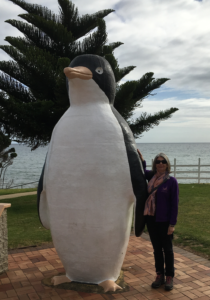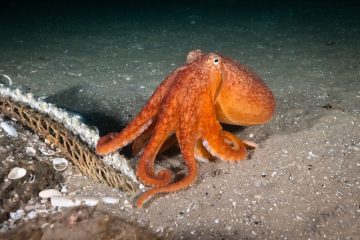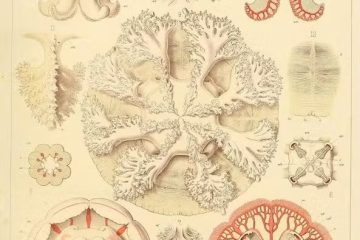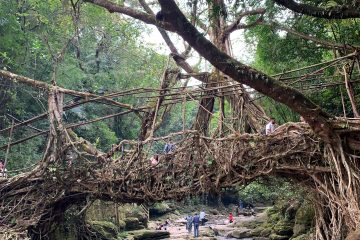Proud to be Bird-Brained
By Jay Johnston

I sat awkwardly aware of the tears coalescing and starting to slide down my cheeks. There I was, in the audience at a small community hall on a small island off Tasmania, losing emotional composure over The Louise Crossley Memorial Lecture by Dr. Bob Brown at the Bruny Island Bird Festival.
Bob Brown comes the closest to a human hero that I can imagine. Even a quick glance at his biography attests to his enormous contribution, commitment, and the integrity of his voice and action. A former Senator of the Australian Parliament and former leader of the Greens Party, his devotion to the protection of the environment in Australia is legendary. I have long admired him, but he is in no need of me to sing his praises.
My tears were not forming in awe of his presence — years of professionally inculcated cynicism mean that I’m not very good at “doing” fandom. I was tearing up for two intertwined reasons (i) the message of hope over despair and call to action in the face of environmental degradation and (ii) the sense of collective agency brewing in the room. That is, a palpable sense of connection growing amongst friends, associates, and complete strangers. These were tears of simultaneous grief and inspiration. Grief for what has been lost and inspiration and hope for what can still be achieved.
Cultural Studies scholar Ruth Barcan has analysed hope and its theological, philosophical, and psychological heritage. She calls a “phenomenology of hope” an approach that: “might give us one way of conceiving hope as an active force.” Following Paolo Freire, she conceptualizes hope as implicitly demanding action. Importantly, it is uncoupled from any “particular individual or political projects” and from “Pollyanna” types of romantic, naive wishing. It is instead necessary for being in the real world, indeed as “generative of action.”
That productive, embodied concept of hope was alive in the Community Hall on Bruny Island. I like to think of my tears as tears of lively hope that precede action. This was the hope Bob Brown was articulating in his presentation. As Barcan argues: “hope is a discipline. It must be practiced, sometimes against the odds.”
Just outside the same hall the sound of Swift Parrots (Lathmus discolor) saturated the air as they rocketed amongst the flowering Tasmanian Blue Gums (Eucalyptus globulus). Active hope sustains the many people who work for these Critically Endangered parrots by designing and installing nest boxes and campaigning against the destruction of their habitat. I saw them that afternoon, symbolically, as feathered beacons of active hope.
Birds have long been important in our symbols, omens, and divinations. From ancient auguries and medieval bestiaries to contemporary animal spirit dictionaries, birds have featured as portents of the political and personal. Indeed, that was the reason for my presence at the Festival: to deliver a lecture on bird signs and symbols. My presentation was cultural natter to complement the extraordinary program of scientific and conservation speakers. This event enabled a wide range of different knowledges to bounce about together.
While it was a delight for me to recount historical examples and explore cross-cultural interpretations, the real joy of the conference came after the formal presentations. For in the time that followed many a participant told me of their own, personal relationships with birds: individual animals, particular species, and flock formations. It was clear that these were sincere human–bird engagements, in which meaningful communication and connection took place.
Bird movement advised of specific changes in the weather. A cluster of raucous, screeching cockatoos signalled the presence of a person grieving. The repeated appearance of a small wren told of a terminally ill family member. These stories interweaved personal biography and cultural tradition, specific place and shared life challenges.
Learning to see, “hear,” and understand these relations is also a discipline, one that the people at the conference had developed over some time of careful observation and environmental familiarity/ literacy. Each relation required that the individual person learn to view the world differently, to recognize the knowledge held by another species, and to use creativity and openness to explore the possibilities of exchange.
Being “bird-brained” has long been a label of derision, meaning a tiny, stupid mind. Yet, I am happy to wear the mantle on two counts. First, scientists recognize that birds are capable of complex cognition, including tool making (see for example the report by Sarah Codosh and on the intelligence of Australian Birds in particular, Gisela Kaplan’s Bird Minds). Second, being bird-brained means the capacity to enter into creative, symbolic human–bird relations. That is, to have a brain for forming close relations with birds. As Emily Dickinson famously wrote: “‘Hope’ is the Thing with Feathers.” Can we follow that gorgeous metaphor in actual living?
#
Jay Johnston is Associate Professor in the Department of Studies in Religion, University of Sydney. An interdisciplinary scholar, her academic work is at the interface of philosophy/religion/arts. Among her current projects is an examination of New Nature writing as an ethico-spiritual practice; the longer-term effects of wildlife tourism on wellbeing, creativity and worldview; and the legacy of antiquarian thought on concepts of place, identity and nature in Cornwall and the Scottish Highlands. She has also been obsessed for many years with “alternative” perception and its rendering in academic discourse.
This Counterpoint blog post may be reprinted with the following acknowledgement: “This article was published by Counterpoint: Navigating Knowledge on 19 December 2018.”
The views and opinions expressed on this website, in its publications, and in comments made in response to the site and publications are those of the author(s) and do not necessarily reflect the views and opinions of Counterpoint: Navigating Knowledge, its founders, its staff, or any agent or institution affiliated with it, nor those of the institution(s) with which the author is affiliated. Counterpoint exists to promote vigorous debate within and across knowledge systems and therefore publishes a wide variety of views and opinions in the interests of open conversation and dialogue.



